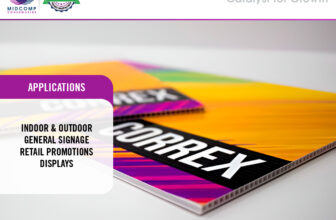
By definition, customer engagement means a two-way interaction. As generative AI gains traction, brands have access to more sophisticated tools to facilitate that dialogue. But customer expectations are also shifting alongside new communication capabilities and brands need to be prepared to use these tools to get ahead of changing customer needs. For example, half of customers say they would switch to a competitor after just one disappointing experience with a brand. That’s why now is the perfect time to redefine customer engagement.
We’re at an inflection point in 2024, both in terms of what customers demand and what brands can deliver. In this transformed marketplace, companies who use new technologies to form human connections and meet or exceed customer expectations will outcompete their peers.
Engaging customers in a transformed marketplace will require communication that is authentic to the brand. You’ll also need a more nuanced view of customer relationships, including insight into why customers need you and what space your brand occupies in the customer’s world. The answers to these five questions can help you understand what customers want and redefine engagement accordingly.
1. Are you asking customers the right questions?
Most brands survey customers at some point during the buying journey. By using Net Promoter Score (NPS) surveys, you can see if the customer would recommend your brand or inquire about aspects of the customer experience to gauge satisfaction. These types of inquiries are a great start, but consider going deeper and asking more specific questions to better understand the shopping experience. For example, say you have a high shopping cart abandonment rate and you need to know why. Are there one too many steps for customers to check out? Are you following up with customers to remind them of items in their shopping cart? If you use surveys to ask the right questions, measure and analyze responses and — most importantly — take action based on the feedback, you can turn customer engagement into operational improvements that drive sales.
2. Do you know who your best customers are?
Keep in mind that the world has changed dramatically over the past few years, and your customer base has evolved too. With a technology stack that makes it possible to collect and analyze data at volume, you can spot shifts in wallet share and get a clearer idea of who your best customers are. Your ideal customers’ age range and other demographics may have changed over time too, so it’s critical to identify which customer groups are likely to provide the most lifetime value in 2024. If it has been a few years since you identified your best customer, prioritize that exercise now because the answer may surprise you — and it may suggest a different outreach strategy.
Read More: SalesTechStar Interview with Craig McAndrews, Vice President of Sales at Mezmo
3. Do you have the right vendor partners?
If you’re asking the right questions to better understand the customer experience and have identified who your best customers are, you probably already have a strong vendor partner network. Vendors who operate securely in the cloud and help you safely collect, integrate and analyze data can facilitate the delivery of personalized customer experiences at scale. But over the past six months, their capabilities have multiplied as technologies like generative AI break new ground. Make sure your vendors are using these new tools to provide the right data for your brand to get ahead of customer expectations and that they understand your goals for customer engagement. A disconnect between a brand and its vendors can result in a mediocre experience and missed opportunities to capture wallet share. And, if you don’t already have a robust vendor partner network in place, now is the perfect time to form those relationships.
4. Is your technology stack able to take action and protect customer data, consent and privacy while supporting new technologies?
Related to the third point above, it’s imperative to make sure your vendor partner network is not only capable of using real-time data to facilitate hyper-personalized customer experiences, but also that it can handle customer privacy and data securely. Emerging generative AI applications are capable of seamless customer communication at exactly the right moment throughout the customer journey. But before you can take full advantage of those capabilities, you’ll need to make sure all existing privacy and security protocols are ready to support these new technologies.
5. Does your system make it as easy for customers to opt out of communication as it is to opt in?
It’s helpful to accept the fact that customers will opt in and opt out of communication with a brand as they see fit and you need to respect their choices. From the customers’ perspective, a brand can be more relevant in their life at certain times and less so at others, so make it easy for customers to start and stop a two-way conversation as they see fit. It’s important to offer multichannel options to engage in communication and allow customers to move seamlessly between platforms, i.e., text, chat, email, phone, voice-first devices, etc.
As generative AI becomes increasingly entrenched in brand communications, customer expectations will keep evolving toward highly-personalized customer experiences. Technology is advancing quickly, so it’s critical to know where you stand currently and what customers need so you can bridge any gaps in customer interactions.
Surveys can help, but to maximize their value, you’ll need to make sure you’re asking the right questions in the right channels. This is also a great time to make sure your brand, technology stack and vendor partner network are focused on your most valuable customers by taking full advantage of new technical capabilities, all while protecting privacy and data. With these resources in place, you can redefine customer engagement in a transformed marketplace.







